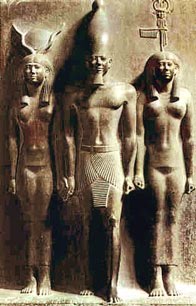Sekhmet: The Lioness Goddess of War and Healing
- The Fearsome Lioness: Sekhmet, an ancient Egyptian goddess, stands out with her distinctive portrayal as a lioness-headed woman, symbolizing her fearsome and formidable nature. Her name itself, “Sekhmet,” translates to “the powerful one.” Among the pantheon of Egyptian deities, Sekhmet held a unique place as the goddess of war, chaos, and destruction. She embodied the unrelenting heat and destructive power of the scorching sun, often associated with Ra, the solar deity.
- Balancing Act: What sets Sekhmet apart from other deities of destruction is her dual nature. While she was renowned for her terrifying reputation, ancient Egyptian belief systems embraced the concept of balance and harmony. Sekhmet’s role was not limited to being a harbinger of chaos; she also possessed attributes associated with healing and protection.
- The Eye of Ra: Sekhmet was sometimes regarded as the destructive aspect of the sun god Ra, acting as his “Eye of Ra.” According to Egyptian mythology, Ra would send Sekhmet to punish humanity when they defied his will. During these episodes, she would unleash plagues, diseases, and devastation. Her wrath was formidable, reflecting the destructive power of the sun, but it also played a crucial role in maintaining cosmic balance and restoring order.
- The Healer and Protector: What makes Sekhmet even more intriguing is her role as a healer and protector. Despite her destructive tendencies, she was believed to possess the power to ward off plagues and diseases. Temples dedicated to Sekhmet were not only centers for religious worship but also served as hubs for healing and medicine. Many ancient Egyptians sought her intercession when facing illnesses and epidemics, believing that her fierce nature could be harnessed for benevolent purposes.
- An Enduring Legacy: Sekhmet’s complex character and her dual role as a bringer of disease and a healer highlight the intricate and multifaceted beliefs of ancient Egyptian religion. Her legacy continues to endure in modern times. Some individuals still invoke her as a symbol of strength and protection against life’s challenges, drawing inspiration from her ability to embody both destructive and healing forces, depending on the circumstances.

